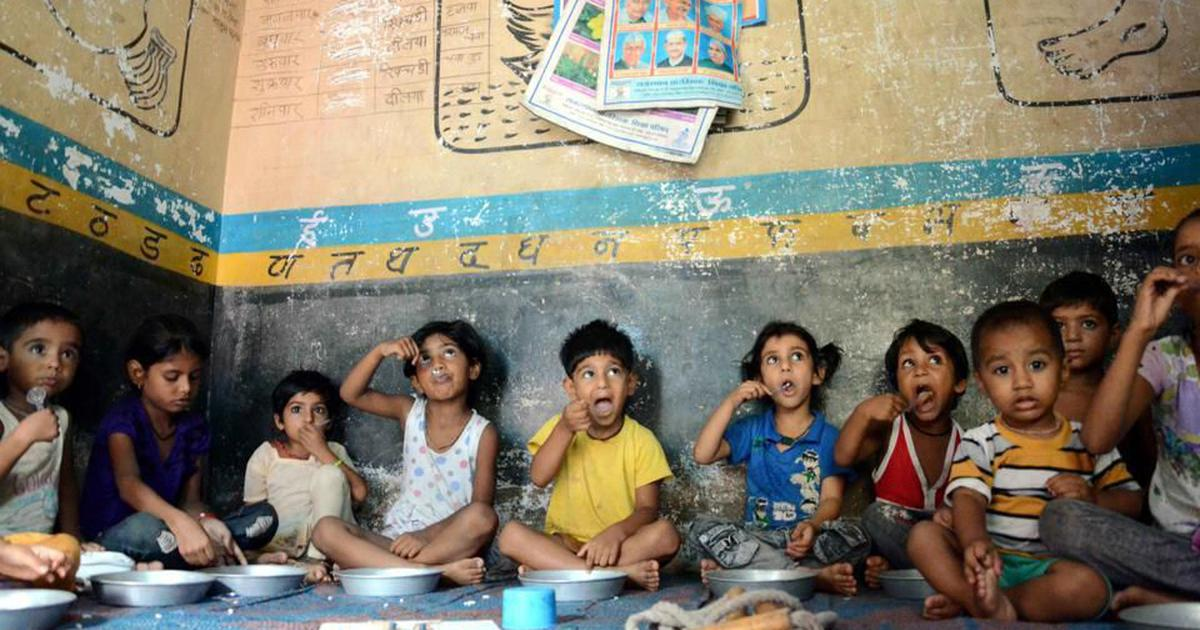Description

Copyright infringement is not intended
Context: The Ministry of Jal Shakti presented the report on the Status of implementation of Jal Jeevan Mission (JJM) in Lok Sabha.
Details
- At the time of announcement of Jal Jeevan Mission, out of 18.93 Crore rural households, 3.23 Crore (17%) households were reported to have tap water connections.
- At Present, 9.24 Crore (48%) rural households have tap water supply in their homes.
Jal Jeevan Mission
- The Mission was launched on August 15, 2019.
- Implemented by the Ministry of Jal Shakti.
- Government of India in partnership with States is implementing Jal Jeevan Mission (JJM) after subsuming erstwhile National Rural Drinking Water Programme (NRDWP) to make provision of potable water to every rural household through tap water connection, by 2024.
- The estimated outlay of the mission is Rs. 3.60 lakh Crore, out of which Central share is Rs. 2.08 lakh Crore.
- To provide safe and adequate drinking water through household tap connections by 2024 to all rural households and public institutions; Gram Panchayat building, Primary School, Anganwadi centre, Health and wellness centres, etc.
Features
- The key features of the Jal Jeevan Mission (JJM) are to make provision of potable water to every rural household through tap water connection at a service level of 55 litre per capita per day.
- The Mission ensures community participation and also includes Awareness, Education and Communication Campaign.
- Development of water supply infrastructure to provide tap water connection to every rural household.
- Development of drinking water sources to ensure long-term sustainability of the water supply system.
- Other features; Providing training, establishing water quality laboratories, Strict water quality testing and surveillance, Promoting Research work, starting knowledge centre, programme for capacity building of communities, etc.
Jal Shakti Abhiyan
- Jal Shakti Abhiyan (JSA) is a time-bound, mission-mode water conservation campaign.
- It was launched in March 2021 with the theme “Catch the rain, where it falls, when it falls”.
- It aims to create appropriate rainwater harvesting structures in urban and rural areas of all the districts in the country with people's active participation.
- During the campaign, officers, groundwater experts and scientists from the Government of India will work together with state and district officials in India’s most water-stressed districts for water conservation and water resource management.
- The JSA aims at making water conservation a Jan Andolan through asset creation and extensive communication.
Steps taken by the Government for water management
- Government of India launched Jal Shakti Abhiyan with a mission mode approach intended to improve water availability including ground water conditions in the water stressed blocks in India.
- National Water Policy (2012) has been formulated by the Department of Water Resources for the conservation of river, river bodies and infrastructure in a scientifically planned manner through community participation.
- Central Ground Water Authority has been constituted under the “Environment (Protection) Act, 1986” for the purpose of regulation and control of ground water development and management in the Country.
- Master Plan for Artificial Recharge to Groundwater 2020 has been prepared in consultation with States/UTs.
- Construction of watershed management structure under Mahatma Gandhi National Rural Employment Guarantee Scheme.
- Pradhan Mantri Krishi Sinchayee Yojana promotes water conservation and management, water harvesting, soil and moisture conservation, groundwater recharge, flood protection, land development.
- Atal Bhujal Yojana for sustainable management of ground water with community participation is being taken up in the identified over-exploited and water stressed areas in the States of Gujarat, Haryana, Karnataka, Madhya Pradesh, Maharashtra, Rajasthan and Uttar Pradesh.
Steps need to be taken
- The Water Management program focuses on recharging underground aquifers and promoting rainwater harvesting. This improves the availability and quality of groundwater in the long run, and provides water security to all.
- Adopt Innovative Approaches to Sustainable Operation and Maintenance.
- Making Village Water and Sanitation Committee under Gram Panchayat, Involve Community members at all Stages.
- Effective Communication among all stakeholders.
- Ensure Transparency and Accountability in Governance.
- Promote and ensure maintenance services.
- Investments in creating the necessary infrastructure, developing skills.
- Empowering Women, as they face more adversities due to lack of easy access to water.
- Awareness Campaign on water conservation.
Way forward
- India has one of the largest watershed management programs in the world. This programme will enhance this progress by adopting and applying scientific technologies, decision support tools, and knowledge exchanges.
- Government and administration should work with local communities to revive traditional water bodies, and design and construct cost-effective groundwater recharge structures; such as check dams, ponds, farm ponds, tanks, recharge wells, etc.
https://www.pib.gov.in/PressReleasePage.aspx?PRID=1809209







.jpg)

.png)


